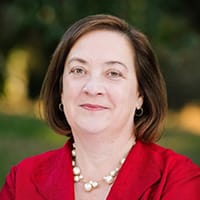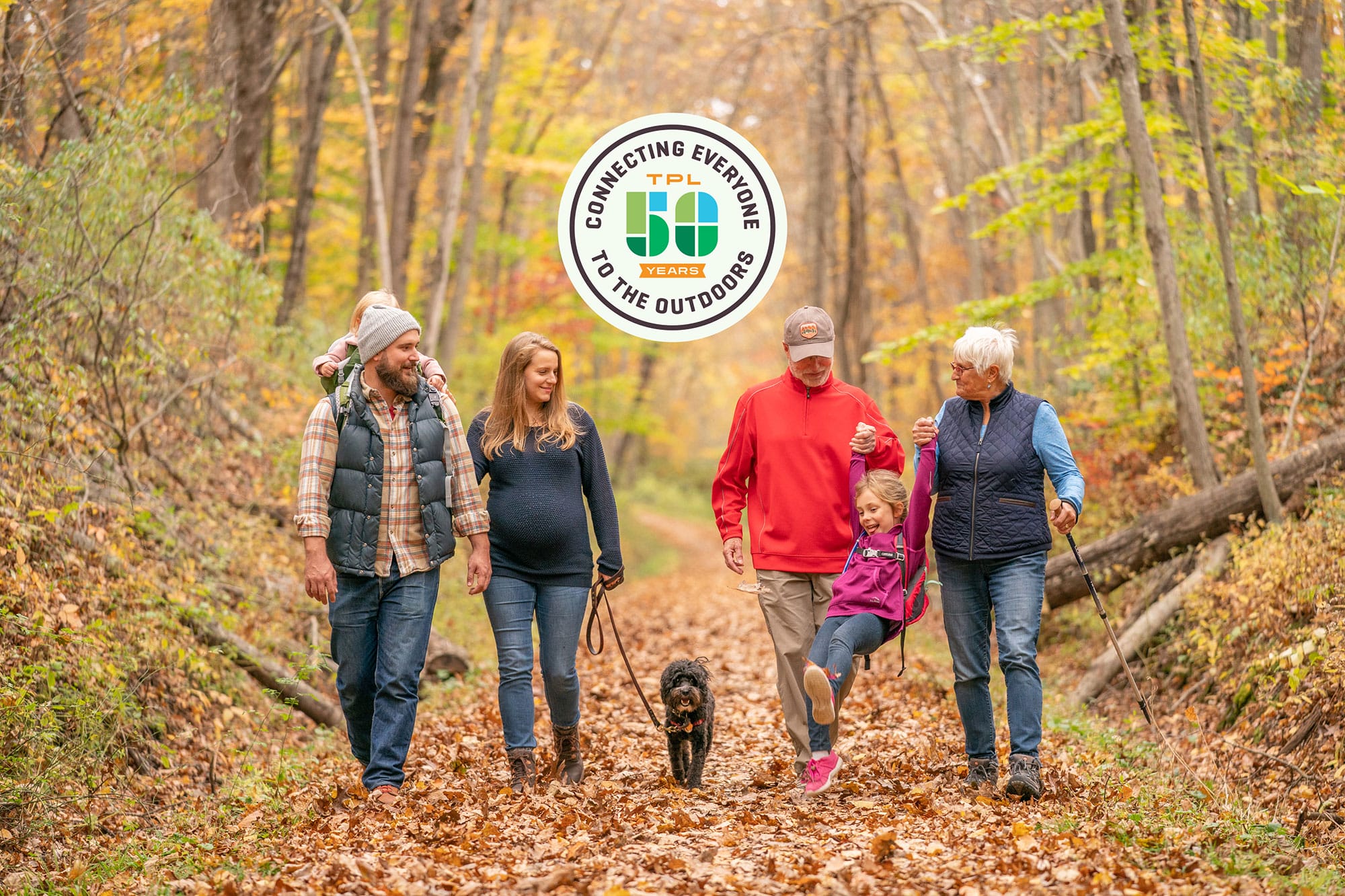 Since the beginning, TPL’s vision has been rooted in the belief that access to the outdoors is essential to people’s well-being. For the past 50 years, we’ve kept that at the heart of our mission to create parks and protect land for people.
Since the beginning, TPL’s vision has been rooted in the belief that access to the outdoors is essential to people’s well-being. For the past 50 years, we’ve kept that at the heart of our mission to create parks and protect land for people.
We’ve measured our success in the tangible results. We’ve put 4 million acres of land into the public’s hands and created nearly 5,400 parks, schoolyards, trails, and greenways across the country. And we celebrate the intangible outcomes that spark our passion for this important work—the deep joy that comes from spending time outdoors, connecting with nature and one another, the health benefits, the strengthening of communities as they create and activate their neighborhood spaces, the legacy we leave for future generations.
Our early work in San Francisco led to the expansion of the Golden Gate National Recreation Area and the creation of Bee Canyon Park that would become Los Angeles’ second-largest park. And our first transformations of vacant urban properties in Oakland spread across the country to New York and helped to “unpave” the way to our Community SchoolyardsTM program that has transformed hundreds of asphalt playgrounds into vibrant green spaces that are improving student education outcomes, community health, and climate resiliency. It’s exciting to see this program expanding in places like Dallas, Oakland, Atlanta, and Los Angeles and shows the impact that a community can make when it comes together around a shared vision.
Throughout our 50 years, we’ve preserved iconic landscapes across the country, including 319,000 acres along the Appalachian Trail, more than 17,000 acres in the Columbia River Gorge, and the combined 6,000 acres from Saguaro National Park in Arizona and Utah’s Zion National Park. These are now some of the best-known and most-visited places in the country—places that are fostering the love of the outdoors in millions. It makes me proud to know that TPL played a role in their preservation.
We’ve protected places tied to tribal and Indigenous heritage like Alakoko Fishpond in Hawai’i, a 102-acre site that contains the largest remaining fishpond on the island, ensuring the continuation of Hawaiian traditional aquaculture. The Kashia Coastal Reserve in California restored 688-acres to the Kashia Band of Pomo Indians after they were forced off their homeland 150 years ago. The L Bar property in New Mexico secured 54,161 acres for public recreation and wildlife habitat and preserved the sacred sites for as many as 30 tribal communities. I’m excited about the momentum we have behind us as we commit to restoring even more sacred lands to tribal and Indigenous communities in the future.
All the while, we’ve served as a trusted partner to communities, helping residents save places they cherish like Bald Mountain Pound in Maine, Mount Ascutney in Vermont, Butte Falls in Oregon, and the Chattahoochee RiverLands in Georgia. These landscapes now provide tremendous opportunities for outdoor recreation and economic growth that will benefit people and wildlife alike for years to come.
And we’re closing the park equity gap all across the country. There is still much work to be done, but we have much to celebrate. Take for instance the Oak Cliff neighborhood in Dallas. We partnered with local leaders to bring their vision of a community space and park to life after decades of redlining and segregation had left residents severely underserved. Today, South Oak Cliff Renaissance Park is a safe vibrant gathering place that’s given them a new beginning. Or Colorado Springs’ newly completed 13-acre Panorama Park that provides nearby residents who’ve long been last in line for investment with a beautiful space for play, exercise and relaxation.
I’m eager for the work ahead as our Black History and Culture program advances efforts to support more places like Nicodemus, a Kansas settlement founded in 1877 by 300 newly freed Black Americans. We’ve worked alongside their descendants to preserve the town as a National Historic Site. And our new partnership with the Interior Department’s Bureau of Indian Education on our pilot Tribal Community Schoolyard Program will create more schoolyards like the one in Chiloquin, Oregon, that provide safe outdoor spaces to exercise and play while honoring the Indigenous histories and culture of the people who use it.
Throughout our history, we’ve seen that land has meaning, that it connects us to our heritage, that it brings us together, and that it can unlock a community’s potential for positive change.
We know there are big things to tackle in the coming years: finding solutions to climate change, improving physical and mental health, repairing past societal harms, and rebuilding our nation’s infrastructure. Our mission cuts across these issues because we know that when we protect land and create parks, we are also making communities happier, healthier, more equitable and resilient. And we will continue to strive to move the needle on all fronts.
Reflecting back on the past 50 years, I couldn’t be prouder of what TPL has accomplished. With your continued support, we will make the country a healthier and more equitable place as we keep connecting everyone to the outdoors.
Diane Regas is president and CEO of Trust for Public Land.
One-third of Americans, including 28 million children, lack safe, easy access to a park within a 10-minute walk of home. Urge your senators to pass the Outdoors for All Act to create parks and enhance outdoor recreational opportunities!

